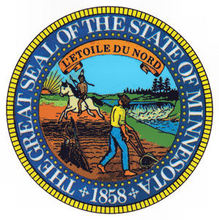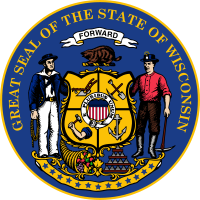Does Anyone Care About Minnesota? (Polling the 2012 Presidential Race)
The Gopher State has been polled in the presidential race at one-sixth the rate in 2012 compared to this stage of the 2008 cycle
 Even though Barack Obama is expected to face a much tougher map to victory in 2012 than 2008, a new poll indicates the Democratic president seems to be in a stronger position to cruise to victory in Minnesota and collect its 10 Electoral College votes than he was four years ago.
Even though Barack Obama is expected to face a much tougher map to victory in 2012 than 2008, a new poll indicates the Democratic president seems to be in a stronger position to cruise to victory in Minnesota and collect its 10 Electoral College votes than he was four years ago.
That poll – conducted by KSTP/SurveyUSA from September 6-9 – finds President Obama leading Mitt Romney by a 50 to 40 percent margin among likely voters.
The 10-point lead is eight points better than a similarly conducted poll by the survey organization from four years ago when Obama was matched up against Republican nominee John McCain.
In that SurveyUSA poll, conducted September 10-11, 2008, Obama led McCain by a 49 to 47 percent margin among likely voters.
One notable difference between the two polls, however, is that the field dates in 2012 occurred at the tail end of the Democratic National Convention whereas the 2008 field dates took place shortly after the Republican National Convention (which was held in St. Paul).
But it isn’t Obama’s advantage over Romney in Minnesota that is the story coming out of this poll – it’s the fact that the state was polled at all.
Only four non-partisan public opinion polls have been conducted in Minnesota thus far in 2012 – all by KSTP/SurveyUSA (excluding a few by the Democratic pollster, Public Opinion Polling).
Minnesota, of course, leads the nation with nine consecutive cycles voting for the Democratic presidential nominee – a mark which is also the 12th longest streak in the 180+ year history of the Party.
But does that explain why the Gopher State has been so infrequently polled this cycle?
At this stage of the 2008 campaign, six times as many non-partisan polls had been conducted in Minnesota:
· 9 by SurveyUSA
· 9 by Rasmussen
· 2 by the Star Tribune’s Minnesota Poll
· 2 by Quinnipiac
· 1 by CNN/Time
· 1 by the Humphrey Institute/MPR
What has changed between 2008 and 2012 to make the state so uninteresting to pollsters?
After all, going into 2008, the state also had the longest-in-the-nation streak at eight consecutive wins for the Democratic presidential nominee.
In 2008 and 2010, Republicans, of course, suffered extremely narrow losses in high profile U.S. Senate (Norm Coleman to Al Franken) and gubernatorial (Tom Emmer to Mark Dayton) contests.
Still, the GOP enjoyed remarkable gains in the state senate and state house – taking control of both chambers for the first time since partisan elections resumed in the Gopher State for those offices in the early 1970s.
Moreover, the Party knocked off one of the Democratic lions in the U.S. House with Chip Cravaack upsetting 18-term incumbent Jim Oberstar in the 8th CD.
And yet, the admittedly Democratic-leaning state has been largely persona non grata for polling firms, save for the local news outfit KSTP who sponsors the SurveyUSA polls.
To be sure, polling can be expensive. But 4 vs. 24?

Wisconsin had been polled only 16 times at this stage of the 2008 campaign from January through early September, but has already seen 23 surveys issued by non-partisan polling organizations thus far in 2012.
Obama, by the way, carried Wisconsin by 3.7 more points than he did Minnesota in 2008.
Nonetheless, the Badger State is one of the most frequently mentioned toss up states this cycle – appearing on more media battleground maps than every state except Colorado, Florida, Iowa, Ohio, Virginia, Nevada, and New Hampshire – due in part to the selection of Paul Ryan as Romney’s running-mate.
By contrast, Iowa, Minnesota’s neighbor to the south, has failed to cash in on its battleground state credentials – perhaps because it carries four fewer Electoral College votes.
Only five non-partisan presidential matchup polls have been conducted in the Hawkeye State in 2012 compared to 15 at this stage of the race in 2008.
Follow Smart Politics on Twitter.

Minnesota simply is not among a handful of ‘battleground’ states where voters and policies are more important than those of the voters in more than 3/4ths of the states that now are just ‘spectators’ and ignored after the conventions.
Presidential elections don’t have to be this way.
The National Popular Vote bill would guarantee the Presidency to the candidate who receives the most popular votes in all 50 states (and DC).
Every vote, everywhere, would be politically relevant and equal in presidential elections. No more distorting and divisive red and blue state maps. There would no longer be a handful of ‘battleground’ states where voters and policies are more important than those of the voters in more than 3/4ths of the states that now are just ‘spectators’ and ignored after the conventions.
The National Popular Vote bill would change existing state winner-take-all laws that award all of a state’s electoral votes to the candidate who get the most popular votes in each separate state (not mentioned in the U.S. Constitution, but since enacted by 48 states), to a system guaranteeing the majority of Electoral College votes for, and the Presidency to, the candidate getting the most popular votes in the entire United States.
The National Popular Vote bill preserves the constitutionally mandated Electoral College and state control of elections. It ensures that every vote is equal, every voter will matter, in every state, in every presidential election, and the candidate with the most votes wins, as in virtually every other election in the country.
Under National Popular Vote, every vote, everywhere, would be politically relevant and equal in every presidential election. Every vote would be included in the state counts and national count.
When the bill is enacted by states possessing a majority of the electoral votes– enough Electoral College votes to elect a President (270 of 538), all the Electoral College votes from the enacting states would be awarded to the presidential candidate who receives the most popular votes in all 50 states and DC.
The bill uses the power given to each state by the Founding Fathers in the Constitution to change how they award their electoral votes for President. Historically, virtually all of the major changes in the method of electing the President, including ending the requirement that only men who owned substantial property could vote and 48 current state-by-state winner-take-all laws, have come about by state legislative action.
In Gallup polls since 1944, only about 20% of the public has supported the current system of awarding all of a state’s electoral votes to the presidential candidate who receives the most votes in each separate state (with about 70% opposed and about 10% undecided). Support for a national popular vote is strong among Republicans, Democrats, and Independent voters, as well as every demographic group in virtually every state surveyed in recent polls in closely divided Battleground states: CO – 68%, FL – 78%, IA 75%, MI – 73%, MO – 70%, NH – 69%, NV – 72%, NM– 76%, NC – 74%, OH – 70%, PA – 78%, VA – 74%, and WI – 71%; in Small states (3 to 5 electoral votes): AK – 70%, DC – 76%, DE – 75%, ID – 77%, ME – 77%, MT – 72%, NE 74%, NH – 69%, NV – 72%, NM – 76%, OK – 81%, RI – 74%, SD – 71%, UT – 70%, VT – 75%, WV – 81%, and WY – 69%; in Southern and Border states: AR – 80%,, KY- 80%, MS – 77%, MO – 70%, NC – 74%, OK – 81%, SC – 71%, TN – 83%, VA – 74%, and WV – 81%; and in other states polled: AZ – 67%, CA – 70%, CT – 74%, MA – 73%, MN – 75%, NY – 79%, OR – 76%, and WA – 77%. Americans believe that the candidate who receives the most votes should win.
The bill has passed 31 state legislative chambers in 21 states. The bill has been enacted by 9 jurisdictions possessing 132 electoral votes – 49% of the 270 necessary to go into effect.
NationalPopularVote
Follow National Popular Vote on Facebook via NationalPopularVoteInc
there is an interactive electoral map to do predictions, checkout how Minnesota will affect this elections votenight.com